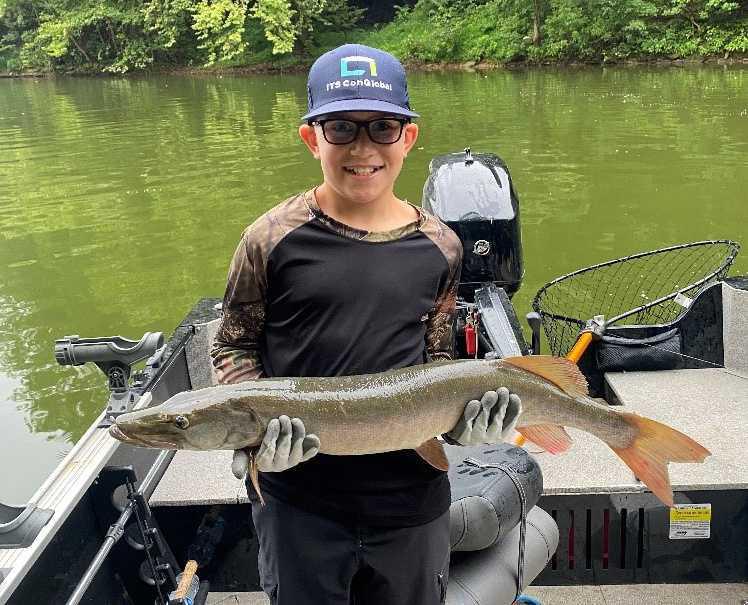FOOD, that is the name of the game... Muskies are the apex predators in North American
waters.
So, let’s get you in the musky state of mind. We are taking a journey. We are watching
lions in the plains of Africa. Lions, like musky, are the TOP of the food chain. Lions don’t
wonder aimlessly looking for their pray. They sit and wait in the most conducive locations for
food to come too them. Highly dense, food rich areas, water holes, grazing areas, and
geographical corridors. All make hunting much easier for a lion.
Creek channels are not unlike a watering hole, muskies utilize to find food and
ambushing locations. Creek channels are large fingers on your lake or river that bring in fresh
oxygenated water. This water is often also cooler or warmer than the main body of water,
depending on season. The introduction of new fresh water from major creeks is a major attractant for all varieties of fish. First and most importantly bait fish such as shad, Sisco, alewife, Cisco and suckers. The in-flux of fresh nutrition rich water is a primary feeding source for bait fish, and this is just the start. In any body of water when you have a high density of bait it will
congregate all predatory fish, bass, walleye, crappy, bluegill, these are all pray for musky. The
entire food chain will key in on these areas. There is no better place for a musky, an apex
predator to be.
Creek channel are also major topographical structures. They act as corridors from the
main basin of your body of water that constantly and historically lead bait fish in and out year
around. The best creeks are typically the deepest and connect to the basin (deepest) or
river channels of the lake or river you are fishing. You can reference any of the lake
maps available to determine how significate a creek is in your body of water. Then you
break it down into key areas within the creek. For example, the mouth, bends, coves,
points, and flats are all great places for a musky to stage on. The more dominate the
feature, the more likely it is to hold a fish. I fish in central Kentucky depending on
weather conditions and seasonality, will determine where and what structures you
need to target. But frankly the answer is simple, find the food, find the best structure,
and you will find an active musky.
We know what to look for, now how to decide what to fish? Musky follow the food and I
would aways recommend finding the best structure in the closest proximity to the bait fish. There are two different ways to present a lure to these
areas. Casting towards the bank and or structure is the most common tactic. This cast
can trigger shallow fish that are on structure or are cover tight to respond. Don’t be afraid to
get shallow, very shallow at times. If the food is there, musky will be there too, especially in
warm water months. However, the most overlooked way is to position your boat is as close to the bank as you can. You are now on top of the structure and casing towards the channel. This allows your lure to come towards the structure in what
I would argue is a more natural direction. Finding different angles to cast is often the
difference between catching pressured fish and not. Having a natural presentation is just as
important as the lure you are using, but when you can do both, you can make a musky come
unglued! The good thing about creeks and creek channel are these areas are normally
much smaller in area than the main body of water you are fishing and not as hard to figure
out. Finding the food, thinking like an apex predator and fishing just a little differently, is how I fish, and it doesn’t only work in creeks!
Till next time.
Jonathan Thompson




